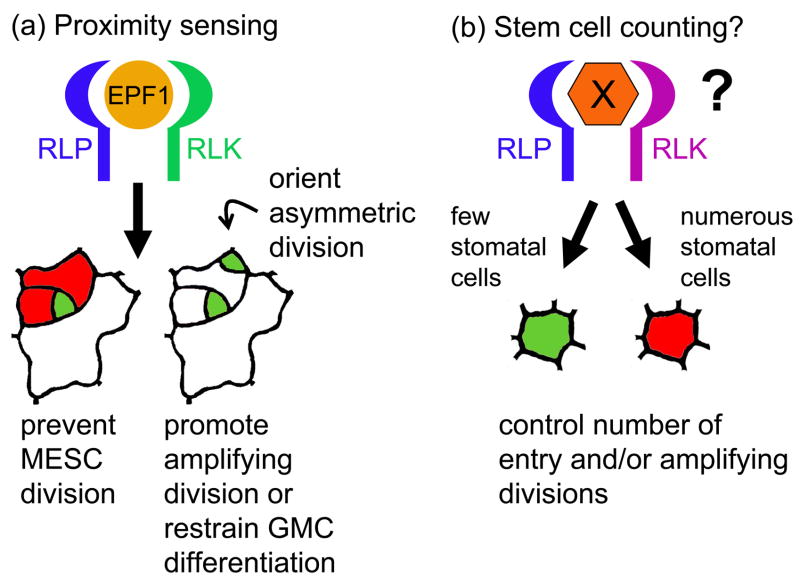Figure 3.
Signals and receptor functions in stomatal biogenesis.
(a) EPF1 acts as a proximity signal potentially recognized by a hetero- or homodimeric TMM or ERf receptor complex (RLK/RLP). Sufficient signal strength is hypothesized to negatively regulate asymmetric divisions of nearby MESCs (red), orient spacing divisions, or promote amplifying divisions of Ms (green) (b) Other types of signals (X) might also be sent and received by stomatal stem cells. One possibility is a mechanism to control the number of cells entering the stomatal pathway in response to precursor/stomatal numbers, perhaps mediated by other EPF family peptides. These hypothetical signals might be recognized by different receptor combinations and integrated with other inputs.

